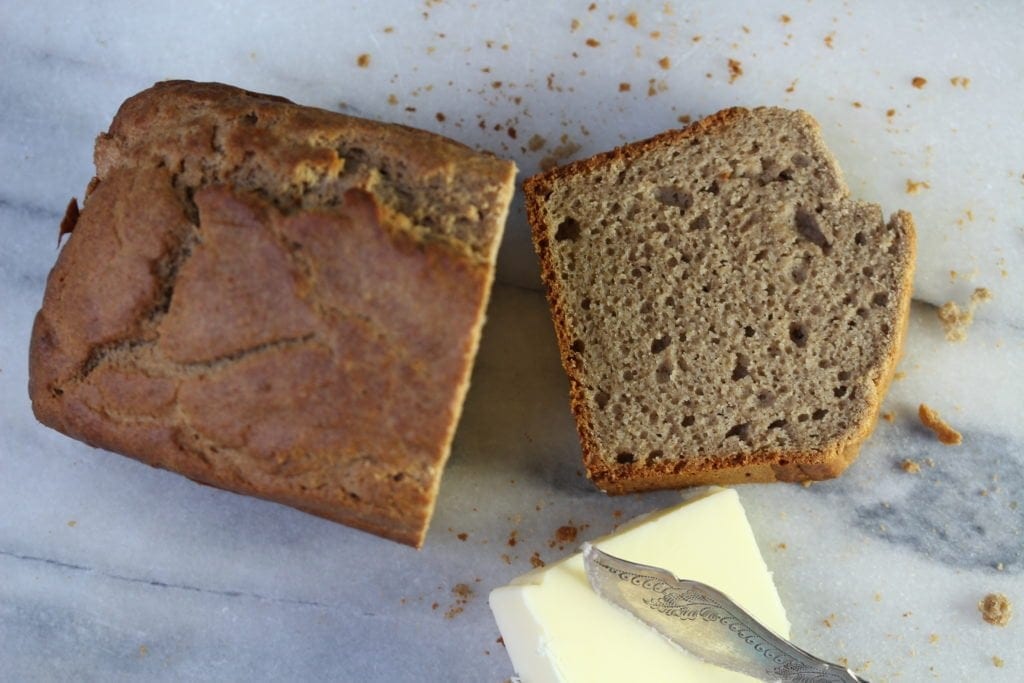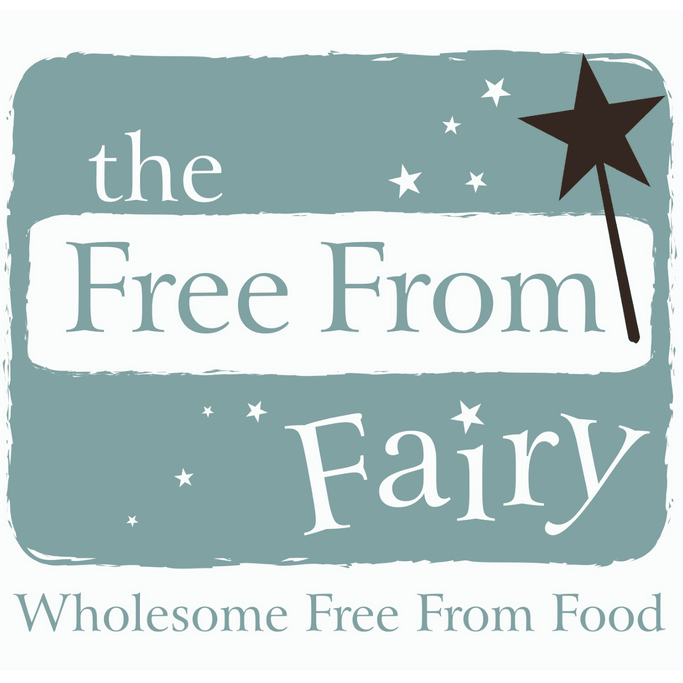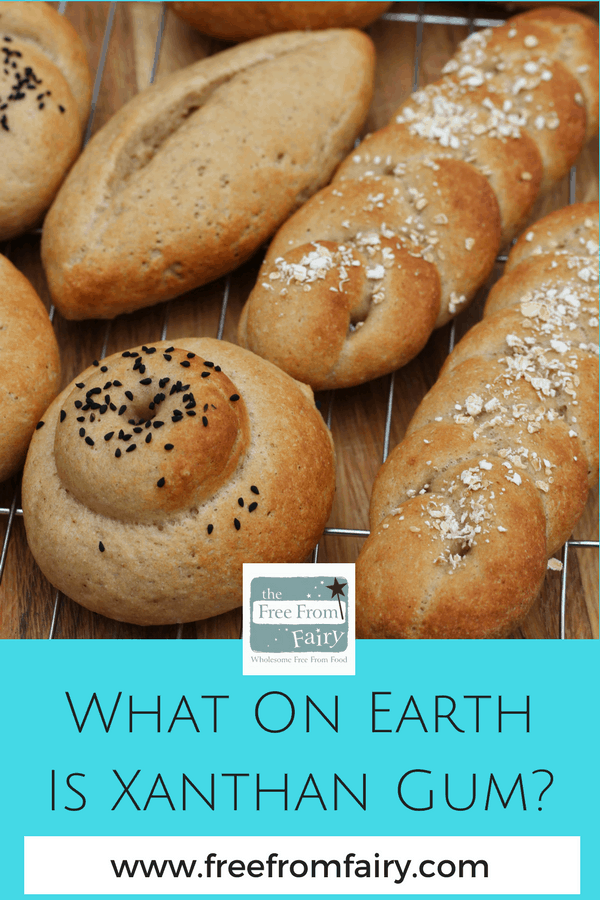I frequently get asked the question “what is xanthan gum?” In this article I’m going to tell you what it is and where it comes from. I’ll also let you know what alternatives there are when it comes to gluten free baking.

Home made banana bread…no strange sounding ingredients here!
It bothers me when I read ingredients on a packet and I don’t immediately know what they are.
In my new blog series I’m exploring what those things are.
Last time I looked at hydroxypropyl methyl cellulose, something that I’d noticed was present in all commercially made gluten-free bread.
I’ve also written about Lecithin, psyllium and mono- and diglycerides of fatty acids.
Today I’m exploring xanthan gum
When I first started baking gluten-free I quickly discovered that xanthan gum was recommended in most things.
I added it to everything from cakes to pastry and bread.
It prevented the terrible crumbliness that I used to get, and made the end results more palatable.
However, after hearing from many people that it doesn’t agree with them I searched for alternatives which I now use instead (I’ll come on to them in a while).
So what is xanthan gum?
Well, it’s an indigestible polysaccharide made from the fermentation by bacteria of glucose, sucrose or lactose.
It’s named after the bacteria that produces it, Xanthomonas Camestris.
Such bacteria causes black rot on leafy vegetables, broccoli and cauliflower.
The bacteria is placed in a glucose, sucrose or lactose solution along with a source of nitrogen, dipotassium phosphate (a source of phosphorus and potassium) and trace elements.
The solution is then stirred and provided with oxygen until the xanthan polymer is produced into the solution.
After one to four days the xanthan is then recovered from the solution by adding isopropyl alcohol. The mixture is dried and milled to produce a white powder that we know as xanthan gum.
What is xanthan gum used for?
It is used in a huge number of industries acting as a binder, stabiliser and thickener.
Along with it’s use in replacing gluten in gluten-free food, it is found in ice-creams, toothpaste and egg substitutes.
It is also used in the oil industry to thicken drilling mud and in cosmetics as a stabiliser.
Is xanthan gum safe to eat?
A number of animal studies have been carried out to determine the safety of xanthan gum in food.
They all concluded that it is a safe food additive with the only possible side effect being softer stools.
The studies also found that orally administered xanthan gum was able to slow tumor growth and prolong survival of mice with skin cancer (although they didn’t know how).
Because the animal studies found that xanthan was harmless, very few human studies have been carried out.
Those that have been carried out used much larger quantities of xanthan in the diet than would be generally eaten.
The main side effects appear to be increased gas, greater stool output and an altered gut bacterial composition (to those that could produce more hydrogen gas and short chain fatty acids).
If like me, you would like to try something different to xanthan gum in your gluten-free baking then here are some alternatives.
Alternatives to xanthan gum
Psyllium husk
This is my favourite substitute, and is entirely natural. It’s the husk (outer coating) of the plantago ovata seed and is a great source of dietary fibre.
Up until now I have always used the ground psyllium husk (so it’s a powder), but I’m finding it hard to find so have started to use just the husk (which is working fine).
You’ll find it in health food shops, on Amazon (affiliate link) and marketed as various natural laxatives too!
Ground flax seeds (linseeds)
This is my second favourite binder. I buy the very cheap seeds and grind them in my coffee grinder until they are like flour.
These can be used as egg-replacers (1 tbsp to 3 tbsp water per egg) too.
Chia seeds
More expensive than flax seeds, I tend to use these as my third option.
Again, I tend to grind them into a powder but I have read that you can just add the whole seeds to some water to create a gel before adding to your recipe.
Again these work as egg-replacers too.
Gelatine or agar agar
Finally, I know that several people (not least Gluten Free Alchemist) use gelatine (or agar agar if you’re vegetarian) as a good gluten replacer in gluten-free baking.
What I’ve discovered over the years is that eating a diet that is as natural as possible makes me feel a whole lot better.
I’m also keen to feed my kids ‘real food’ so I try to avoid synthetic man-made stuff where possible.
My wholegrain gluten-free flour blend is comprised of 70% wholegrain flours (with their associated nutrients).
It has no added gums or thickeners.
That’s because when you’re baking with my blend you often don’t need to add such ingredients in.
I’ve written about gluten free flour and gluten free flour blends if you’re not sure what they are or why they are important in your baking.
The only time that I use psyllium is generally in bread making or where gluten is essential in the final result.
For things like cakes, pancakes and biscuits there is no need to add any additional binders with my flour blend.
If you know someone who bakes gluten-free why not share this blog post so that they can be informed about what they eat?



Halyna says
Psyllium husk triggers my diverticulitis symptoms of abdominal distension initially followed by cramping, pain, raised temperature etc if I continue to eat it. For my mother and daughter they both said it made them feel extremely nauseous and they just couldn’t stomach it.
I feel better avoiding all bread and eat home-made flax seed crackers instead. Occasionally I do have the odd slice of gluten free bread, but usually start feeling diverticulitis symptoms creeping on when I do. My daughter also feels better when she doesn’t eat (gluten free) bread and just eats it once in awhile.
I have read that psyllium husk lowers cholesterol, by blocking some of the fat in the small intestine, but that it also blocks fat-soluble vitamins A, D, E and K, as well as omega-3 fats. For this reason experts recommend taking psyllium a few hours away from meals and vitamin supplements. In that case should it really be used as an ingredient in bread? It’s one to think about.
Vicki Montague says
Very interesting. I will look into this further. Unfortunately with gluten free bread there needs to be some kind of binder. When you look into most things you find interactions/problems that some will experience.
Halyna says
Thank you for this article about xanthum gum and its alternatives.
I have tried all of them at one time or another since my daughter was diagnosed with coeliac disease and I was diagnosed with diverticulitis.
One you don’t mention is guar gum which is very popular in the body building world and I use as a smoothie thickener.
Guar gum comes from a seed and is less processed than xanthum gum and is preferable to xanthum gum if you are allergic to corn (most xanthum gum brands use corn to grow the bacteria on). In general guar gum is considered better for cold foods and xanthum gum for baking (eg bread).
Neither my daughter or I can tolerate psyllium husk and neither could my mother who was also coeliac. We have to be careful with bought gluten free products for that reason.
I hope this extra information is useful to others out there struggling with their various intolerances.
Vicki Montague says
Hi Halyna, that’s so interesting and helpful. Thank you for taking the time to share that. I’ve never heard of anyone not tolerating psyllium husk so it’s useful to know. You may not want to share, but wondering what affect it has on you? Vicki
Kimberly says
Is cellulose in supplements as bad as HPMC?
Vicki Montague says
Hi Kimberly, I don’t know the answer to that I’m afraid. So sorry.
Kate - gluten free alchemist says
Loving your ‘what on earth is….’ series. I have to say, I had done lots of checking on Xanthan Gum and still use it (it doesn’t seem to cause a digestion problem for us… yet), with some moderation and a slow move towards Psyllium as my second choice for bread-bakes (alongside gelatine/sub). I ground my psyllium husks at home to a fine powder and that seems to work well.
Thanks for the shout out! Much appreciated x
Vicki Montague says
Yeah, I agree Kate. I still use xanthan on occasion but generally I only use ingredients that are natural nowadays.
Le Coin de Mel says
That’s such an interesting read, Vicki! You know what? I’ve never even questioned what Xanthan gum might be, and I’m glad you investigated it. I won’t use it ever again as I always have linseed and chia seeds at home!
Vicki Montague says
Ha, it’s funny how we just eat things without thinking about it isn’t it?!
Glutarama says
Loved reading this, missed the last post exploring ingredients so off to read it now. You write in a way my little non-sciency brain can understand!!
Vicki Montague says
Ah thanks Rebecca. I always try to keep things simple because when I read things elsewhere I often find them hard to understand even though I have a science background!
Polly says
Really interesting to read. Thank you or such a thoughtful, balanced post.
Vicki Montague says
Thanks for taking the time to leave a comment. Glad it was useful.